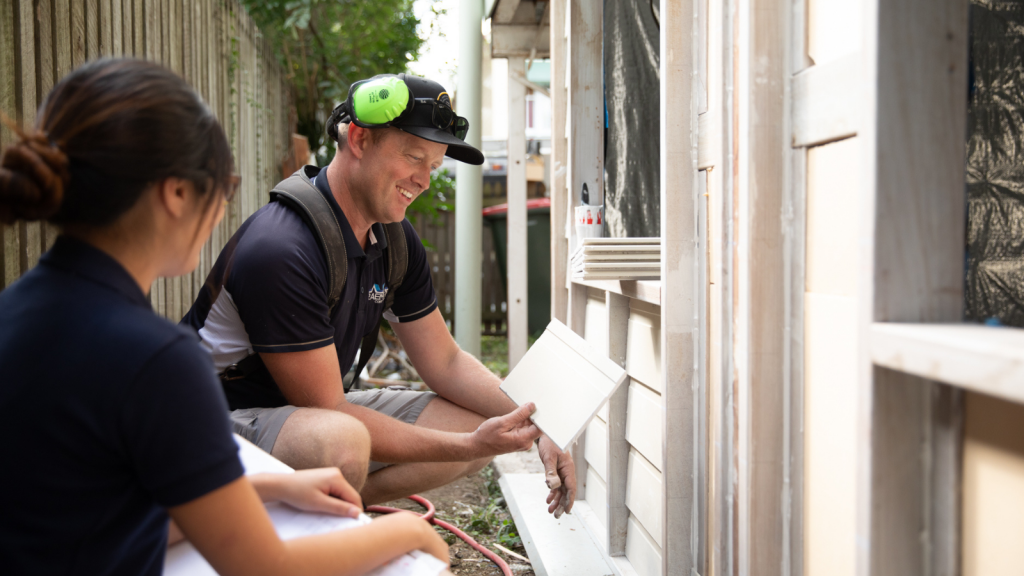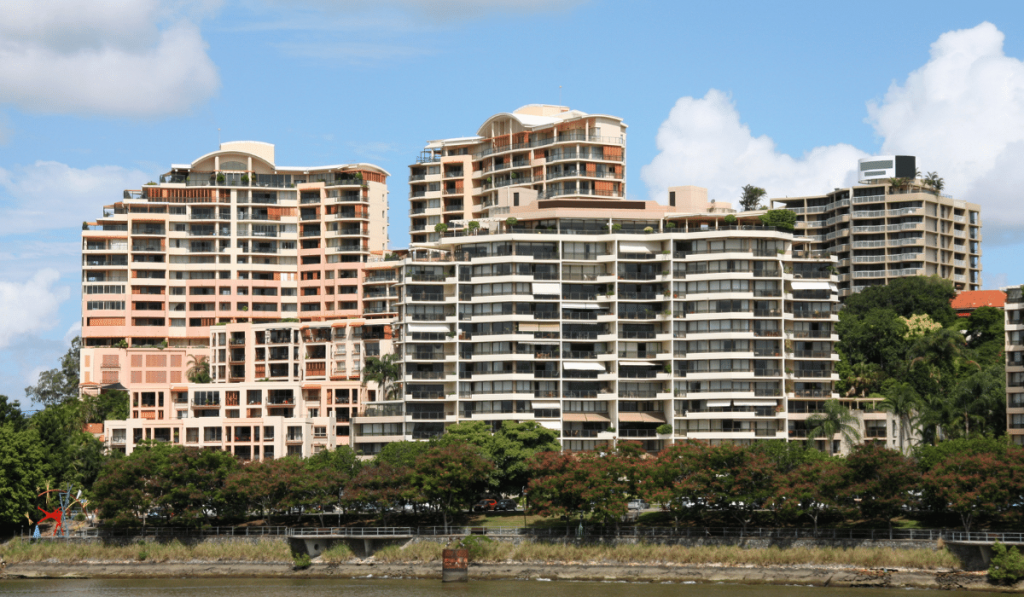How to improve flood resilience for apartment buildings
A guide to help apartment owners and body corporates prepare their building service areas for flooding events.
Is your apartment building at risk of flooding?
Your building’s body corporate may be eligible to participate in the free Flood Resilient Suburbs – Apartments Program. Click the button to find out more information.
Getting started
If you would like to improve the flood resilience of your apartment building, consider the steps outlined on this page:
- What is flood resilience – To start your journey, it’s important to understand the principles and definitions of flood resilience.
- Understanding your flood risk – In order to prepare a home for flooding, you first need to know what type of effect flooding will have on the property.
- Different flood resilience strategies available – Preparing your property to reduce the impact of flooding will allow you to get through a flood event with less damage and expense.
What is flood resilience?
Investing in resilience measures and retrofitting existing building features can significantly reduce the effort, cost and time to recover from future flood events.

Flood-resilient design is the use of engineering solutions, construction techniques and design choices that can withstand substantial and multiple inundations of water to reduce the damages and costs of flooding. Flood-resilient design enables property owners and bodies corporate to take action before a flood event, so they can easily clean and quickly return a building to normal function after such an event with minimal long-term disruption.
During a severe weather event, the most common flooding in an apartment building is often in the basement which can damage common services and lead to isolation and outages for extended periods. Building flood resilience within the basement is an effective first step to minimise disruption in future flooding events.
Understand your flood risk

It is important to understand the likelihood of flooding for your property and local area to help you prepare for and reduce the impact of flooding on your body corporate’s apartment building. Ensure the body corporate has done the three steps below.
Remember, the FloodWise Property Report will provide you with an estimated flood level based on previous floods and modelling data, however, every flood is unique and water levels may rise higher than previous floods. Consult with a suitably qualified engineer or tradesperson to decide what height you should be considering for flood-resilient techniques.
To learn more about the types of flooding featured in your FloodWise Property Report, view the Brisbane City Council Flooding in Brisbane Guide for Residents
Once you’ve received a measure of the property’s floor levels, compare these levels to those in your FloodWise Property Report from Brisbane City Council to understand what percentage chance the property has of flooding above the floor level. Doing this will help you understand what parts of your property are likely to be affected by flooding, how often it might occur, and how deep that flooding could be. This will also be important for buildings that have a basement lower than ground level and may be susceptible to flooding.
Flood resilience strategies for apartment buildings
Now that you know how the property could be affected by flooding, you can use that knowledge to work with engineers and other technical experts to identify which flood resilience strategies will work for the building.

Choosing flood resilient strategies
There are many practical flood resilience techniques that range in price and are suitable for most apartment building types. Bodies corporate and building owners can work with engineers and appropriately skilled tradesmen to use flood-resilient techniques that can help prepare the building and reduce stress, expense and time taken to recover from a flood event.
The main consideration for flood-resilient apartment buildings is the drainage and utility service systems in the basement, as flooding of this area is most likely to affect the liveability of the entire property.
Flood resilience tips for apartment buildings
Essential electrical services are recommended to be positioned at a minimum of 500mm above the 1% AEP (average exceedance probability) level as shown on your property’s FloodWise Property Report. 1% AEP means there is a 1% annual chance that flood waters may reach or rise above the level shown on the FloodWise Property Report so consider this when choosing how high to raise your electrical services. An additional 500mm is recommended but raising services higher than this level will reduce flood risk further.
Where roofwater is piped to enter the basement, consider redesigning it so that it drains directly to the existing gully pit, manhole, headwall or waterway outside of the basement.
It is important to regularly maintain and inspect existing drainage systems on the property (such as roofwater pipes, gutters and stormwater drains) via cleaning and clearing of blockages to avoid water entering the basement.
Options for uninterrupted backup power supply options include battery, fuel, gas or renewable energy (solar, wind, microhydro, combination). The battery capacity, generator size and/or fuel storage must be sufficient to run the pumps for 48 hours or longer.
A backflow device is recommended to be included for all stormwater pump systems to reduce the flooding risk to the basement and should be designed to gravity drain into a Council stormwater system.
It is recommended to install and regularly check on non-return valves for internal roof and surface water drainage or sewers.
Ventilation openings into the basement can be retrofitted or raised to the 1% AEP level to prevent the ingress of floodwaters into the basement.
More information for bodies corporate
Before commencing with changes to basements, seek guidance from a suitably qualified person to obtain professional advice about the most suitable approach to improving your flood resilience, as each circumstance will be different.
Depending on what’s involved, this may include engaging a Registered Professional Engineer of Queensland (RPEQ) with expertise and experience in hydrological and hydraulic assessment. Other changes may require an electrical engineer, building certifier or plumber.
For all water and sewer-related enquiries, contact Urban Utilities on 07 3432 2200 or email developmentenquiries@urbanutilities.com.au
Find a builder, plumber and building certifier
Queensland Building and Construction Commission: www.qbcc.qld.gov.au
Find an engineer
Board of Professional Engineers Queensland: www.bpeq.qld.gov.au
For more information on flood resilience, refer to the frequently asked questions. Otherwise, contact Brisbane Sustainability Agency at floodwise@sustainablebrisbane.com.au
Not a body corporate?
View tips on how to build flood resilience if you own a house, a business or work in the building, construction and architecture industry.
